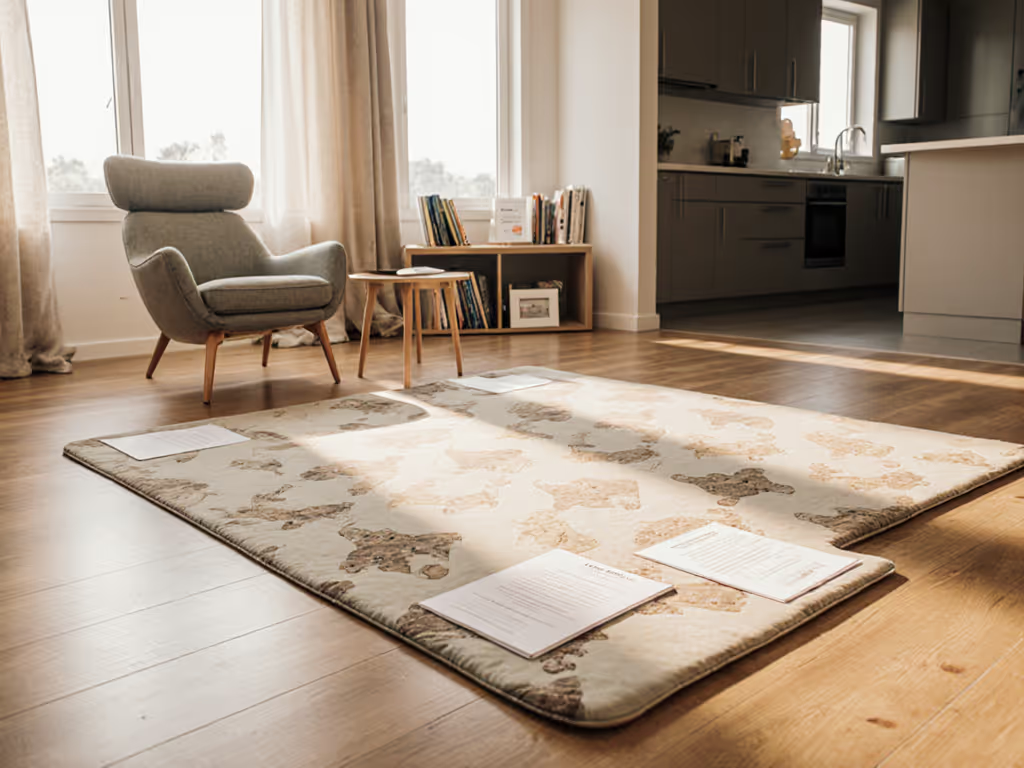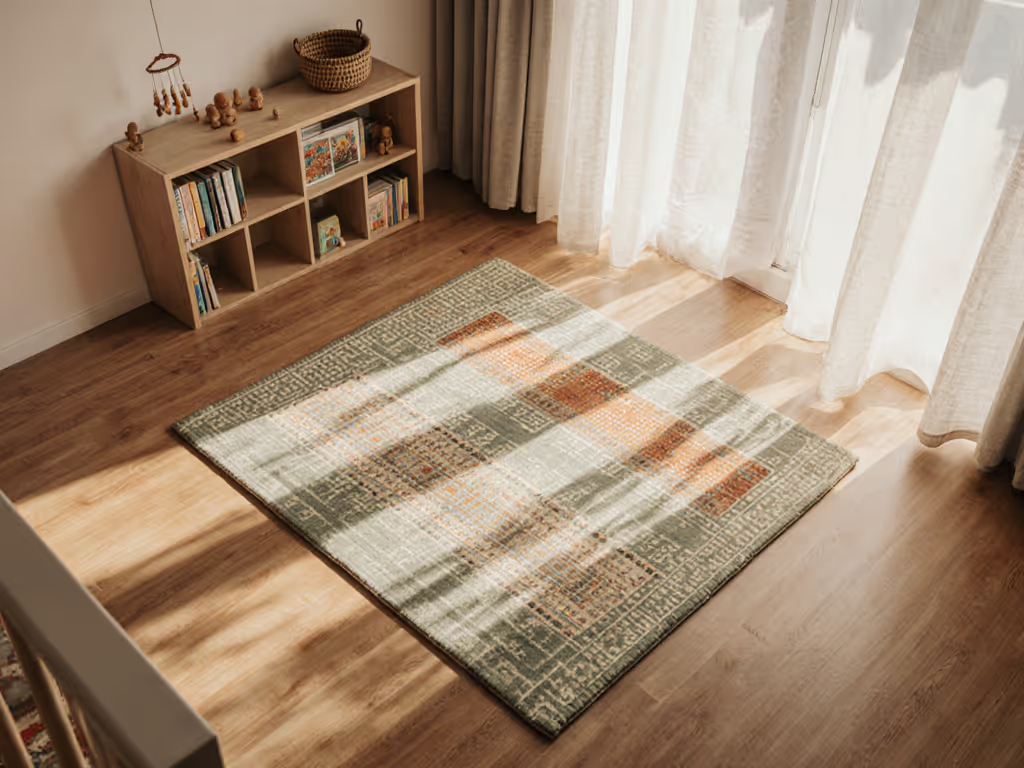
Definition of Sensory Play Mat: Complete Guide
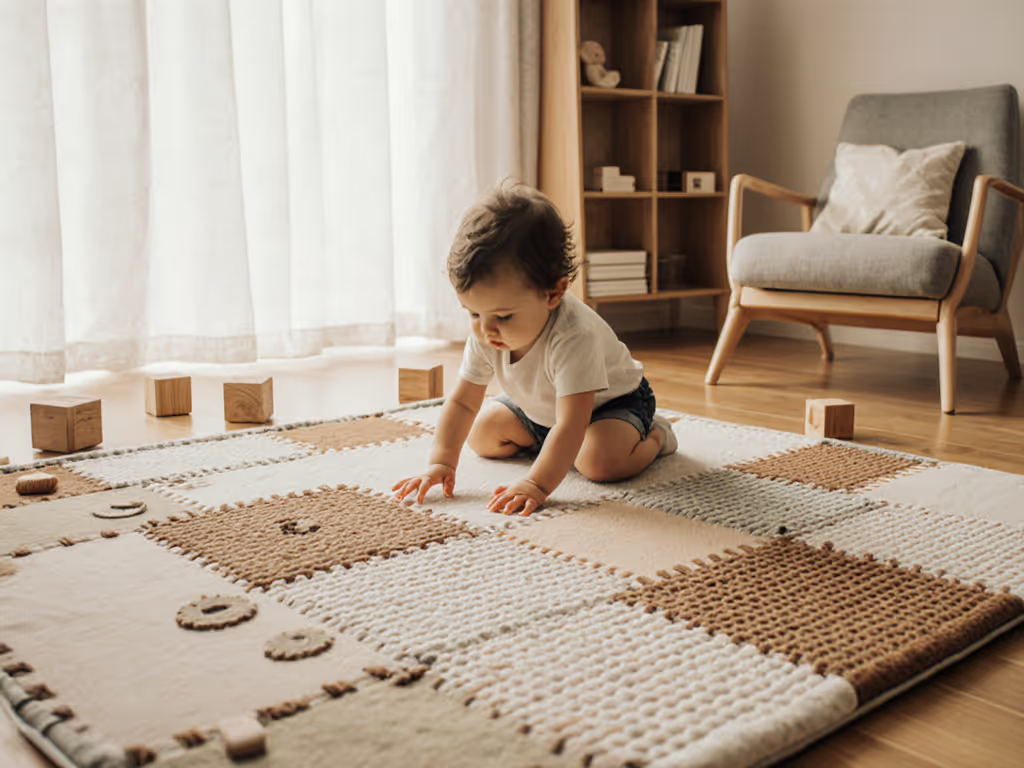
Babies form over one million new neural connections every second during their first years. Parents want to give their children every opportunity to thrive and the right environment makes a huge difference in early growth. Sensory play mats stand out by turning simple floor time into an exciting blend of comfort, safety, and discovery that supports both learning and healthy development.
Key Takeaways
| Point | Details |
|---|---|
| Sensory Play Mats Enhance Development | These mats support cognitive, motor, and emotional growth by providing engaging, multi-sensory experiences for infants and toddlers. |
| Key Features to Consider | Look for varied textures, sound elements, and soft, safe materials to enrich playtime and ensure safety. |
| Types of Mats for Different Needs | Choose from texture-rich, interactive, or waterproof options depending on your child's developmental stage and play scenarios. |
| Safety Standards Matter | Prioritize mats that comply with safety certifications to avoid harmful chemicals and ensure a secure play environment for your child. |
What Is a Sensory Play Mat?
A sensory play mat is a specialized, multi-functional surface designed to engage and support infant developmental stages through strategic sensory stimulation. Unlike traditional baby blankets or basic floor coverings, these innovative play spaces transform ordinary floor time into an interactive learning experience that nurtures a child's cognitive and physical growth.
Typically constructed from soft, padded materials, sensory play mats feature an intentional mix of textures, colors, and interactive elements that captivate babies' attention and encourage exploration. These mats often include tactile zones with different fabric surfaces, crinkly sections that produce sounds when touched, high-contrast visual patterns, and sometimes built-in toys or attachments that promote reaching, grasping, and motor skill development.
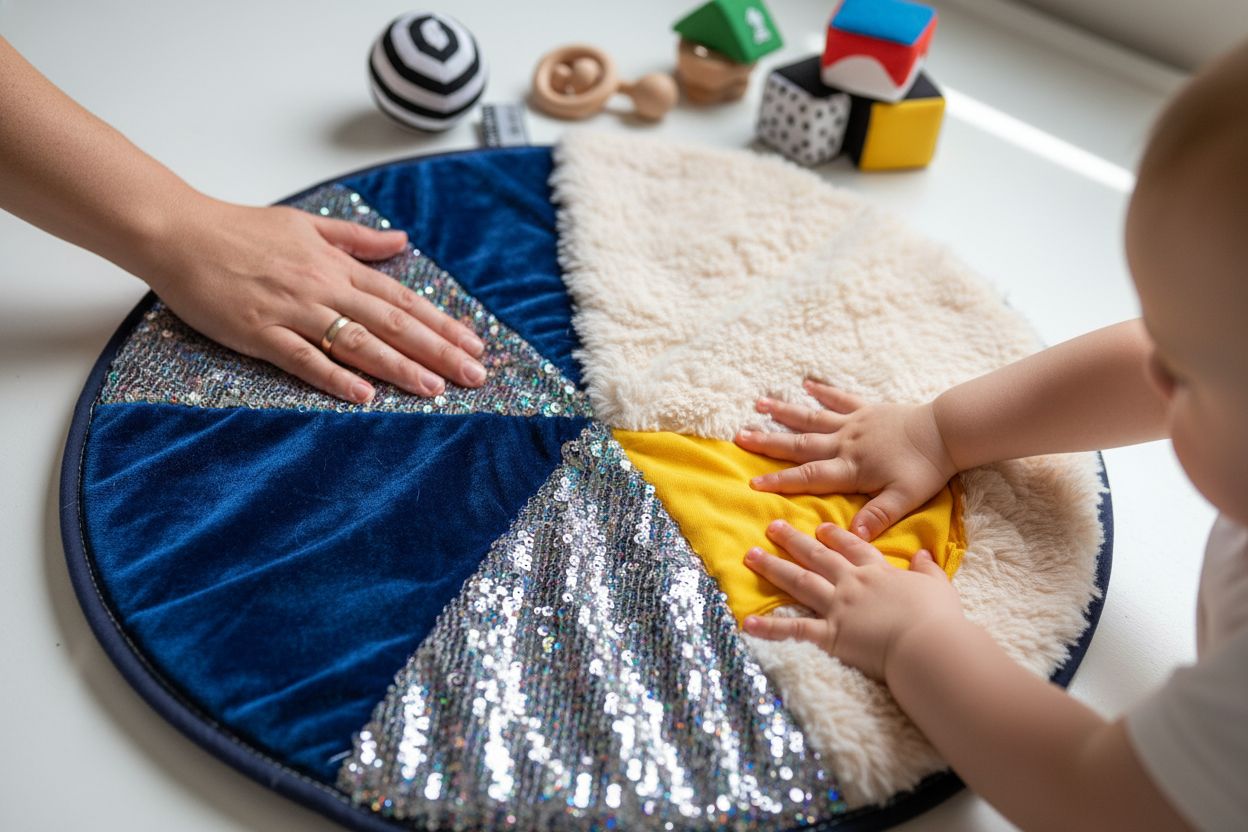
The primary purpose of a sensory play mat extends far beyond simple entertainment. These carefully designed surfaces support critical developmental milestones by providing a safe, stimulating environment for essential activities like tummy time. By engaging multiple sensory systems simultaneously - including touch, sight, sound, and balance - these mats help babies build neural connections, improve spatial awareness, and develop fundamental motor skills during their most formative early months.
Key features of sensory play mats typically include:
- Varied textural regions for tactile exploration
- Bright, high-contrast color patterns
- Sound-producing elements like crinkly fabrics
- Soft, cushioned surfaces for comfort
- Attachable or integrated developmental toys
- Easy-to-clean materials for practical parental use
Major Types of Sensory Play Mats
Sensory play mats come in several distinct design categories, each tailored to address specific developmental needs and parental preferences. Understanding these variations helps caregivers select the most appropriate mat for their child's unique growth stage and sensory exploration requirements.
The texture-rich foldable mat represents a popular category, featuring multiple material panels that provide diverse tactile experiences. These mats typically incorporate different fabric textures like fur, velvet, sequins, and synthetic materials that encourage fine motor skill development and sensory curiosity. Parents appreciate these mats for their compact design, which allows easy storage and transportation while offering a comprehensive sensory experience.
Another significant category includes interactive digital mats with integrated electronic components. These advanced play surfaces incorporate light-up sections, sound-producing zones, and motion-activated elements that stimulate auditory and visual senses. Some models connect to smartphone apps, allowing parents to track engagement levels and customize interactive experiences for their infants.
Key types of sensory play mats include:
- Texture-rich foldable mats with varied material panels
- Interactive digital mats with electronic stimulation
- Foam-based puzzle mats with raised sensory elements
- Waterproof play mats for messy sensory exploration
- Themed educational mats featuring specific developmental zones
- Portable roll-up mats for travel and outdoor use
Each mat type offers unique benefits, enabling parents to choose a design that best matches their child's developmental stage and learning style.
Here's a comparison of major sensory play mat types:
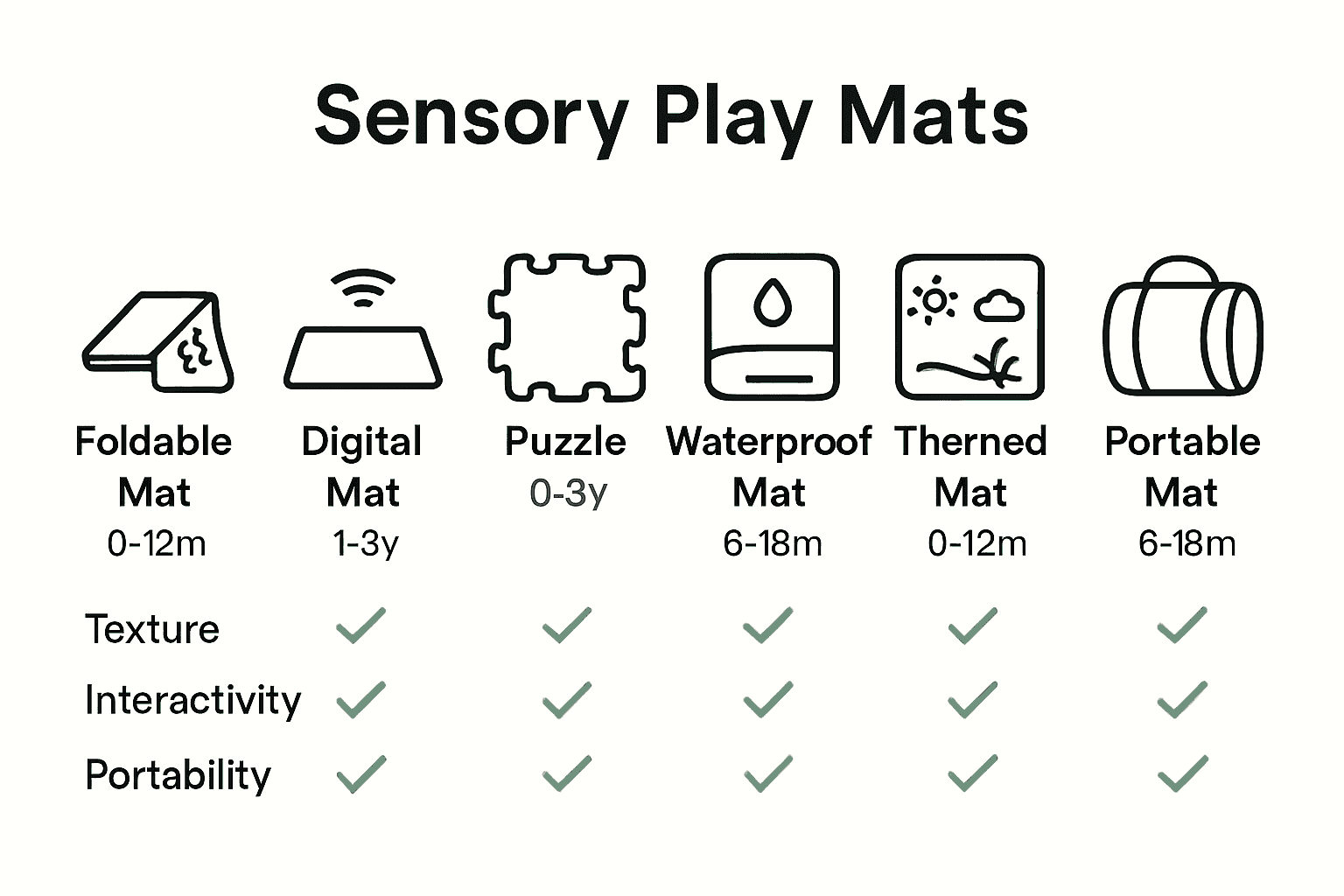
| Type of Mat | Key Features | Ideal For |
|---|---|---|
| Texture-rich foldable | Multiple fabrics<br>Easy to store<br>Compact design | Fine motor development<br>Travel |
| Interactive digital | Lights & sounds<br>Motion-activated<br>App-connected | Visual/auditory stimulation<br>Modern tech exposure |
| Foam-based puzzle | Puzzle pieces<br>Raised elements<br>Soft foam | Floor cushioning<br>Custom layouts |
| Waterproof play | Easy to clean<br>Liquid-proof<br>Durable surface | Messy play<br>Outdoor use |
| Themed educational | Labeled zones<br>Learning motifs<br>Colorful patterns | Early learning<br>Cognitive skills |
| Portable roll-up | Lightweight<br>Quick setup<br>Travel-friendly | Families on-the-go<br>Small spaces |
Key Benefits for Infant and Toddler Development
Sensory play mats offer profound developmental advantages that extend far beyond simple entertainment, providing a critical foundation for early childhood learning and growth. These specialized surfaces transform ordinary playtime into a comprehensive developmental experience that nurtures multiple aspects of a child's cognitive, physical, and emotional progression.
One of the most significant benefits is the support for motor skill development. During tummy time, these mats help babies strengthen crucial muscle groups, including neck, shoulder, and core muscles. The varied textures and interactive elements encourage reaching, grasping, and exploring, which directly contributes to improving hand-eye coordination and fine motor skill refinement. Babies naturally engage their muscles while navigating different sensory zones, creating a fun and purposeful physical development environment.
Beyond physical growth, sensory play mats profoundly impact cognitive and emotional development. The multisensory engagement stimulates neural connections, supporting early brain development through tactile, visual, and auditory experiences. These mats create a safe, predictable environment where infants can explore and learn, building emotional security and confidence. The interactive elements also subtly introduce early language and problem-solving skills as babies learn cause-and-effect relationships through touching, listening, and observing.
Key developmental benefits include:
- Enhanced muscle strength and motor skill coordination
- Improved sensory processing capabilities
- Increased neural connection development
- Boosted cognitive learning through interactive exploration
- Emotional security and confidence building
- Early introduction to cause-and-effect relationships
- Stimulation of visual, auditory, and tactile senses
By providing a rich, engaging play environment, sensory mats become more than just a surface – they're a critical tool in supporting holistic childhood development.
Essential Safety and Material Standards
Ensuring the safety of sensory play mats requires careful attention to material composition and rigorous manufacturing standards. Parents must look beyond aesthetic appeal and prioritize products that meet stringent safety certifications and chemical safety guidelines to protect their infants from potential health risks.
Chemical safety stands as a critical consideration in selecting sensory play mats. Responsible manufacturers avoid potentially harmful substances like PVC, phthalates, BPA, lead, and formaldehyde. Certifications such as Oeko-Tex Standard 100 and Global Organic Textile Standard (GOTS) provide crucial assurance that materials have been thoroughly tested and meet strict toxicological criteria. These certifications ensure the mat is free from harmful chemicals that could potentially cause long-term health issues or skin irritations.
Regulatory compliance represents another essential aspect of sensory play mat safety. Reputable products should adhere to international safety standards like BS EN 71, CE, or UKCA markings, which guarantee that the mat has passed comprehensive testing for physical safety, chemical composition, and potential hazards. Special attention must be paid to potential risks like detachable small parts, excessive chemical emissions, and structural integrity that could compromise an infant's safety during play.
Key safety considerations include:
- Absence of toxic chemicals (PVC, phthalates, BPA)
- Compliance with international safety standards
- Oeko-Tex Standard 100 certification
- No detachable small parts
- Low chemical emission levels
- Hypoallergenic materials
- Non-toxic dyes and printing processes
- Durability and tear resistance
By prioritizing these safety standards, parents can create a secure sensory exploration environment that supports infant development without compromising health and well-being.
How to Choose the Right Sensory Play Mat
Selecting the perfect sensory play mat requires careful consideration of your child's developmental stage, safety requirements, and specific sensory exploration needs. The right mat can transform playtime into a rich, interactive learning experience that supports cognitive and physical growth while ensuring maximum comfort and safety.
For infants, prioritize mats with high-contrast visual designs, extra thickness (at least 1.5 cm), and non-toxic materials. Look for certifications like EN 71-3 and CPSIA that guarantee chemical safety. The ideal infant mat should feature soft textures, minimal small parts, and designs that encourage tummy time and gentle sensory exploration. Thickness and cushioning are crucial to protect delicate muscles and provide a comfortable surface for early developmental activities.
As children transition to crawling and toddler stages, the selection criteria evolve. Durability, waterproofing, and more complex sensory elements become important. Seek mats with modular designs that offer easy cleaning, slip-resistant surfaces, and interactive features that match your child's growing curiosity. Consider mats with varied textural zones, sound-producing elements, and designs that can adapt to different play scenarios and developmental milestones.
Key selection criteria include:
- Age-appropriate design and complexity
- Comprehensive safety certifications
- Material thickness and cushioning
- Non-toxic, hypoallergenic materials
- Ease of cleaning and maintenance
- Slip-resistant surfaces
- Varied sensory stimulation elements
- Durability and long-term use potential
- Adaptability to different play environments
Remember, the best sensory play mat is one that grows with your child, providing safe, engaging, and developmentally appropriate sensory experiences.
Discover the Sensory Play Mat That Grows With Your Child
Searching for a sensory play mat can feel overwhelming when you want the best for your family. The article highlights real concerns such as chemical safety, developmental support, and finding a mat that encourages both sensory learning and physical growth from newborn tummy time to active toddler play. Many parents share the worry that most mats do not provide enough transparency on safety or cannot keep up with fast-changing needs at home.
At Floorbloom, we help families confidently choose a beautiful play mat that delivers on every promise and fits into daily life. Our mats are rigorously tested for safety and crafted for every milestone mentioned in the complete guide, from textured zones for early motor skills to certified materials that protect your baby's health. Do not let uncertainty hold you back. Explore our trusted selections and find a solution that brings joyful, safe play to your home today.
Frequently Asked Questions
What is a sensory play mat?
A sensory play mat is a multi-functional surface designed to engage infants through strategic sensory stimulation, promoting cognitive and physical growth during critical developmental stages.
What are the key features of sensory play mats?
Sensory play mats usually include various textures, high-contrast colors, sound-producing elements, soft and cushioned surfaces, and sometimes built-in toys for enhanced exploration and skill development.
How do sensory play mats benefit infant development?
Sensory play mats support motor skill development, enhance sensory processing capabilities, promote cognitive learning, and help build emotional security by providing a safe space for infants to explore and learn through play.
What safety standards should I consider when choosing a sensory play mat?
Look for mats made from non-toxic materials free from harmful chemicals like PVC and phthalates. Ensure they have safety certifications like Oeko-Tex Standard 100 and compliance with international regulations to guarantee the safety of the product.
Related Articles

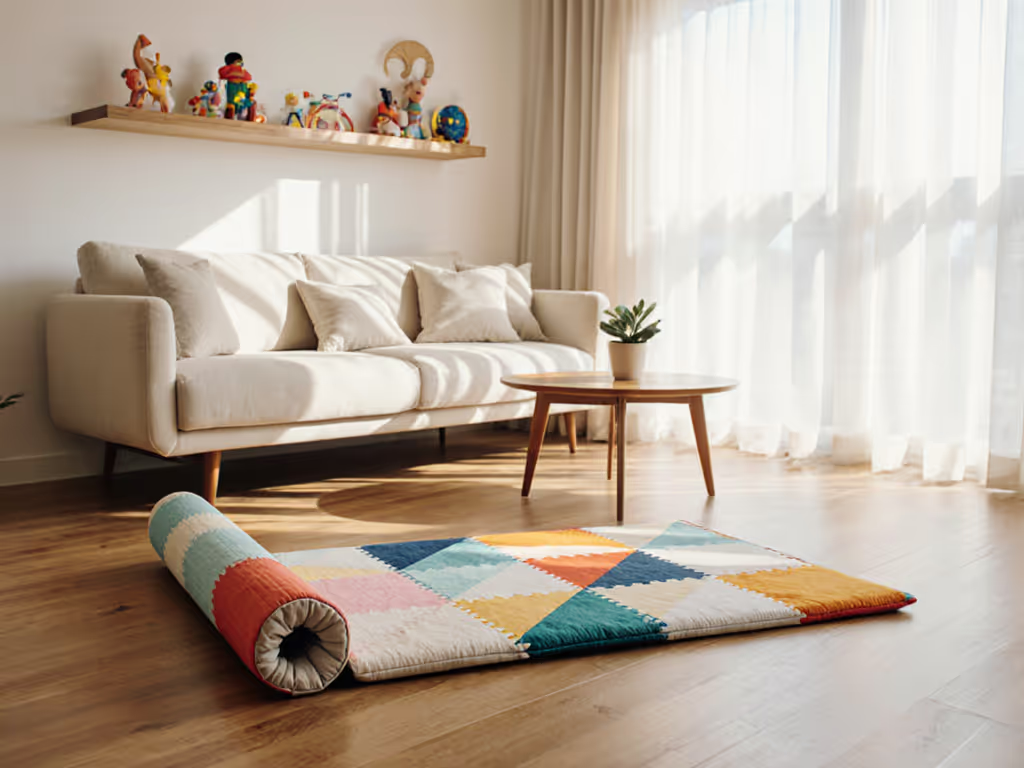
What Is a Foldable Play Mat? Complete Guide
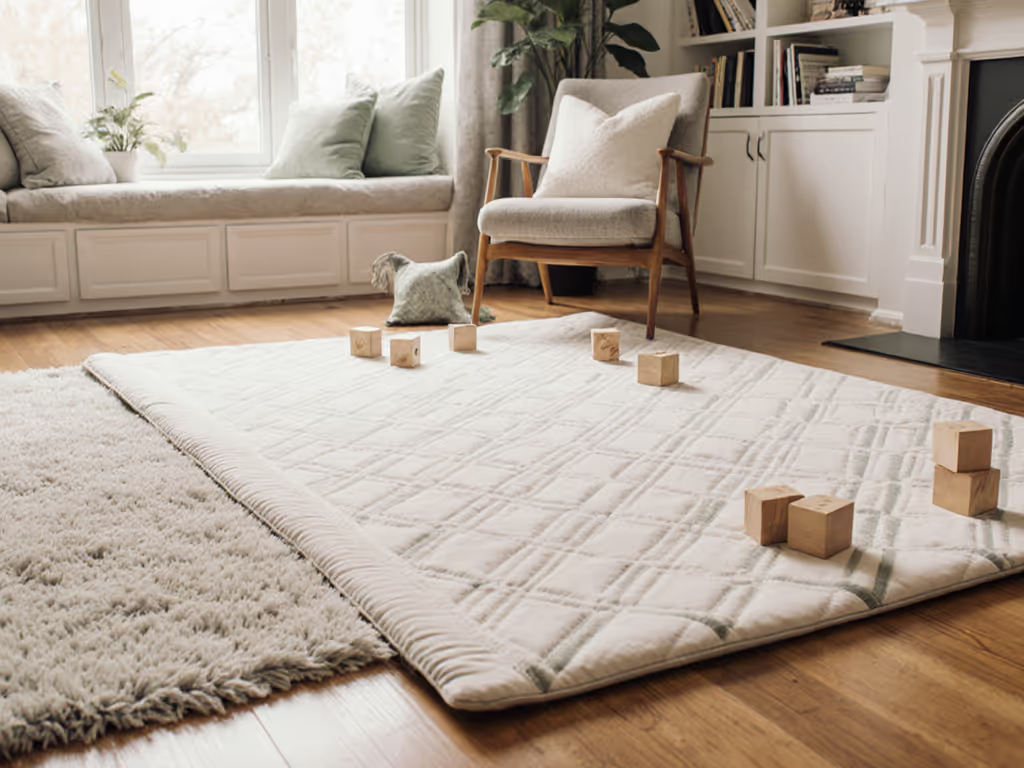
Role of Play Mats: Complete Guide for Safe Play Spaces
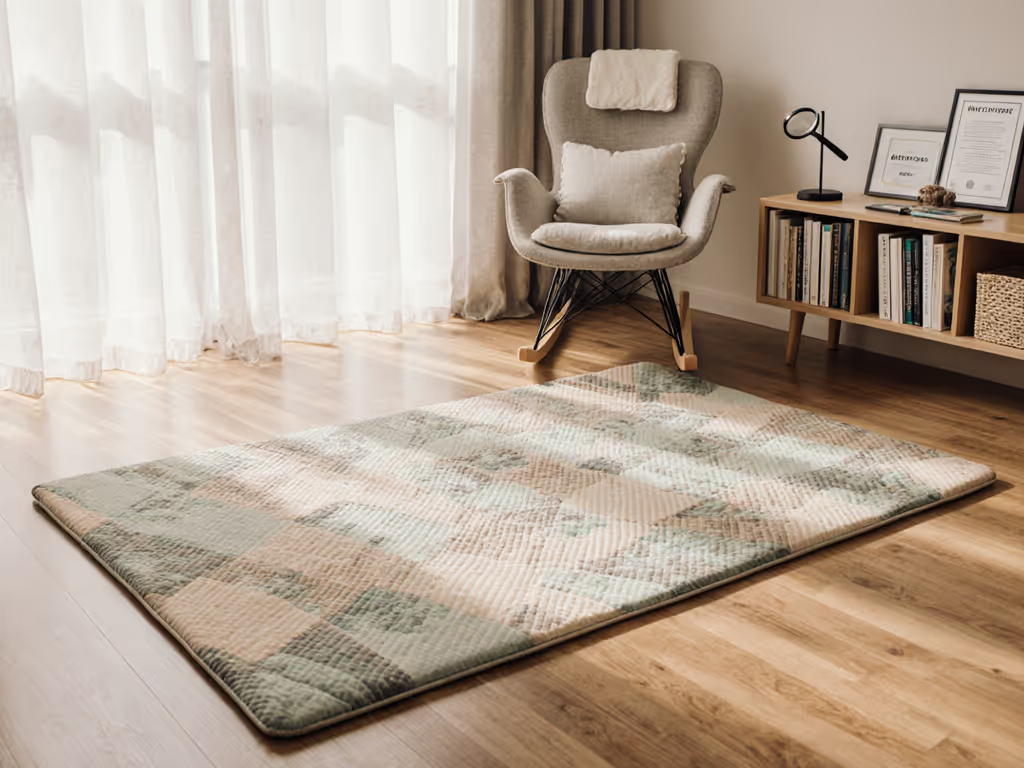
Play Mat Safety Standards Explained: Essential Guide
